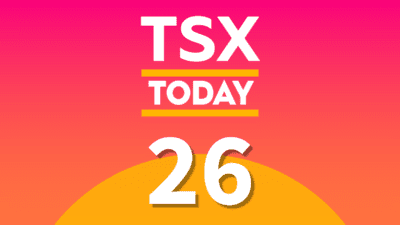Companies operating in Canada’s oil patch continue to experience a range of issues that affect their ability to obtain higher prices for the crude produced. Three issues generating the greatest degree of concern are: falling demand from Canada’s key energy export market, infrastructure and transportation bottlenecks, and growing environmental opposition. But the key question is how do they affect investors?
1. The U.S. is moving closer to energy self-sufficiency
One of the burning issues in the patch is the prediction by a number of energy analysts that the U.S. will achieve energy self-sufficiency by 2035, which is being driven by the U.S. shale oil boom. According to the U.S. Energy Administration, U.S. crude production has shot up 26% since 2012 and is expected to grow by another 11% between now and 2015.
The U.S is Canada’s key export market for crude and natural gas exports, accounting for around 98% of all energy exports, so these developments will have a significant impact on demand for Canadian crude. This will cause U.S. demand particularly for Canadian light oil to wane, exerting significant downward pressure on the prices of Canadian crude blends.
This has already seen the price for Canadian light crude (Edmonton Par) fall by almost 3% for the year to date and its price differential to the West Texas Intermediate benchmark widen by almost 7% over that period.
2. Lack of transportation infrastructure is preventing operators from reaching key export markets
Another burning issue for Canadian oil producers is the lack of transportation infrastructure, particularly oil pipeline capacity. This is preventing Canadian crude producers from accessing U.S. Gulf Coast refineries and key export markets, making it a key driver of the price differential between Canadian crude blends and WTI.
By the end of April this year, the price differential between Canadian heavy crude (West Canadian Select) and WTI had widened, seeing West Canadian Select trading at 26% discount to WTI. Furthermore, analysts are expecting this price differential to grow further with pipeline constraints continuing to affect the ability of Canada’s oil industry to access vital markets.
3. Environmental and social opposition is curtailing critical infrastructure development
The other key issue affecting Canada’s oil patch is growing opposition to oil sands mining and oil pipelines on environmental grounds. Already this has been a cause of the delay in U.S. approval for TransCanada’s Keystone XL pipeline, which according to some industry analysts, even if approved will not significantly reduce transportation bottlenecks.
Environmental opposition is also affecting the approval of Enbridge’s (TSX: ENB)(NYSE: ENB) Northern Gateway pipeline, which will transport crude to Canada’s west coast for export to rapidly growing Asian energy markets. The pipeline was originally approved by the Canadian energy regulator but was rejected by Kitimat residents. There is also growing opposition to Kinder Morgan’s plan to expand its Trans Mountain pipeline system between Edmonton and Burnaby.
Regulations concerning the operations of oil sands mining and bitumen production have also been tightened, particularly the management of tailings ponds. This has increased development and operational costs for oil sands players in the patch, which in many cases are working hard to minimize the environmental impact of their operations.
What does all of this mean for investors?
Higher crude prices are helping to offset the impact of these issues on the prices of Canadian crude blends at this time. But this won’t last forever with the price of crude as highlighted by crude oil futures expected to drop by 21% over the next five years.
The Canadian oil industry needs to work hard to overcome these challenges if it is to continue growing profitability and there are signs this is occurring. Already Enbridge and Crescent Point Energy are working on receiving approval to re-export Canadian crude from the U.S. to European markets.
This will allow both companies to access lucrative Brent pricing, with Brent trading at an 8% premium to the U.S. benchmark crude, WTI. This premium between is expected to continue as European countries look to reduce their dependence on Russian energy exports, in light of the Ukrainian crisis.
The large integrated energy majors with geographically diversified operations are among those operators best positioned to cope with these issues. Their downstream operations provide greater flexibility in managing price differentials and margins. Plus the geographical diversity of their operations allows them to access a number of energy markets, so as to not solely be reliant upon the U.S.
Already Husky Energy (TSX: HSE), has been able to tap into the lucrative Asian energy market with production commencing at its Liwan gas project in the South China Sea. A key benefit for Husky is that natural gas produced from the project is contracted to be sold onto the Chinese energy market at a premium to the spot price.
Integrated energy major Suncor (TSX: SU)(NYSE: SU) has been able to tap into the European market and for the first quarter 2014 received Brent pricing for 96% of its total crude production. This was a key driver of Suncor’s solid financial results for that period.
Enbridge is also well positioned to manage these issues, with it holding a virtual monopoly over a range of key Canadian oil pipeline and infrastructure assets. This has allowed it grow profitability to record levels quarter-after-quarter, making Enbridge what fellow fool Robert Baillieul calls one of Canada’s most stable income investments.
Clearly, these issues will continue to have a significant impact on operators in the patch, but the Canadian oil industry is working hard to overcome them, with accessing alternate energy markets being at the top of the list. While these issues may impact the profitability of smaller operators, oil pipeline infrastructure providers and integrated energy majors are well positioned to overcome these issues and continue unlocking value for investors.







